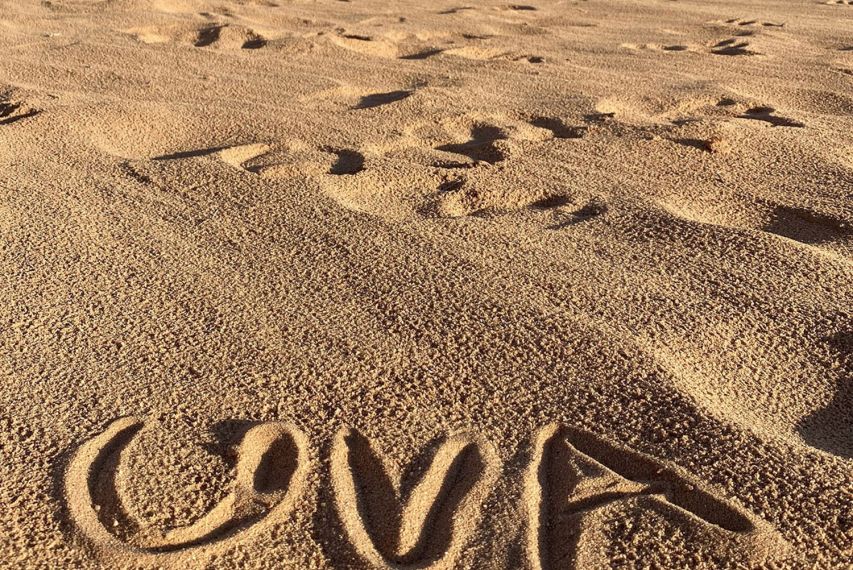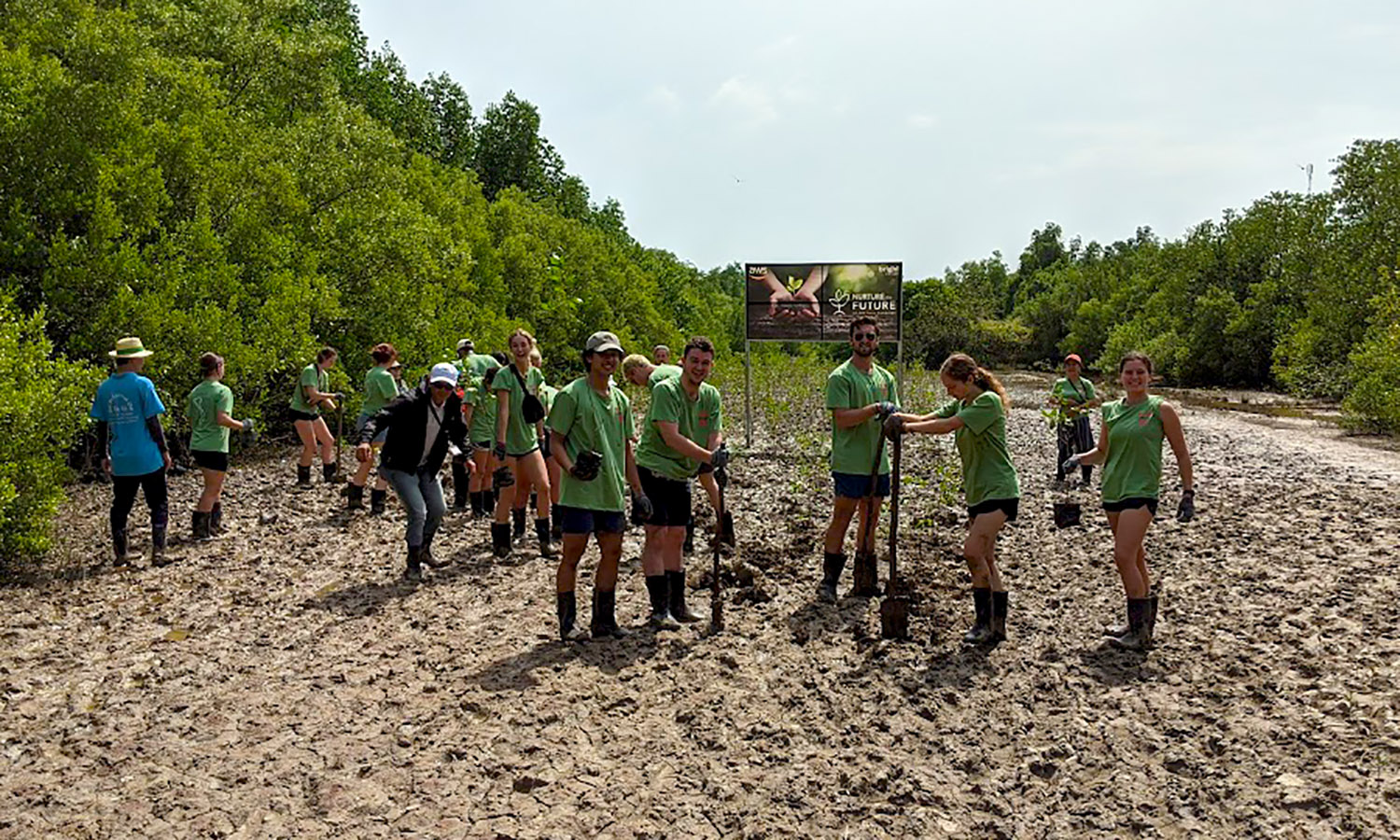A record seventeen Education Abroad Programs took the University of Virginia students to places as distant and diverse as Argentina, Australia, Jordan, Kenya, and Vietnam, among other places for the first time since the pandemic disrupted travel in 2020.
J-Term as it is popularly known — typically meets the last week of winter break and are designed to foster interest in topics students might find useful as they build their careers. It concluded mid-January.
According to the International Studies Office, enrollment in the study abroad courses was up by 22 percent. The program also gives grants to students to participate in the program. More than 70 students received financial scholarships this year.
“The University is fortunate that so many faculty answered the call to offer education abroad opportunities again,” said Dudley Doane, Director of ISO adding that this interest in education abroad by students is truly exciting. “The students are ready to challenge themselves, take risks, and grow – both personally and intellectually.”
UVA Global spoke to three faculty members who offered study abroad courses during J-term on what truly excited them about this opportunity.
January Term Students Head Abroad Once Again
January Term Students Head Abroad Once Again

UVA in Italy: Renaissance and Baroque Rome
This course offered by Professor Lisa Reilly from UVA’s Department of Architectural History was first introduced when J-term first started 19-years ago. This course provides firsthand, direct knowledge of Renaissance and Baroque art and architecture through an intensive program of on-site visits in Rome.
What were some of the highlights of the course? And how has the course evolved since you started teaching it?
Reilly: Teaching on site is the real highlight – in the classroom we are limited to slides – which first of all are flat and typically distort the scale – St Peter’s and a small painting can both look to be the same size on the screen. On site, we can look very closely at each object and site to understand the details, the materiality as well as the context for the work. Originally J-term was quite a bit longer so when this course was first developed with Francesca Fiorani of the art history program, the first part was held in Florence and looked at Renaissance art and architecture and then we moved to Rome, as most artists did in the early 16th century, for a consideration of the Renaissance revival of the city under the popes and the movement into the Baroque.
What are some of the highlights of these experiences, for you and for students?
Reilly: Well – there are many. Often, I have students who had studied Baroque painting on Grounds with Prof Goedde and they are thrilled to see the Caravaggios of the Cerasi Chapel, for example, which make more sense visually when you see them in the chapel for which they were designed. Others find visiting the excavations under the Vatican and the opportunity to understand how Rome is a city of layers by physically walking through the layers at the Vatican or the church of San Clemente compelling. For all – the ability to learn how to visually analyze a work of art or architecture and to develop the needed vocabulary by looking closely on site is key.

What are the benefits of taking students abroad to study these themes?
Reilly: The best way to see and understand art is to experience it in person, particularly in its original context. The entire course is taught on site, with no time in the classroom. It emphasizes understanding art in its original site. While we do visit the Villa Borghese, which is now a museum, the collection was formed in the 17th century and still contains many of its original works. The scale and arrangement of Hadrian’s Villa in Tivoli cannot really be understood without visiting it.
Anything else you would like to mention?
Reilly: The students on the course are fabulous – we often start at 815 in the morning and are outside regardless of the temperature but as with this year – they show up on time and are enthusiastic about their visits. In addition, the course is for students from throughout the University – this year Comm, Batten, Engineering, A&S, and the School of Architecture are represented – so it is a way for many students who often do not have the opportunity to study abroad or study the history of art and architecture to do so. Many have taken no art or architectural history courses before – so this is a great introduction.

UVA in Vietnam: An Ecological-Economic Exploration
This is one of the newest courses in the J-term and is offered by Global Studies Professor Spencer Philips and Huong Ngo. It was offered for the first time in 2020. The program began in Ho Chi Minh City (aka Saigon), with a stop in Dalat in the central highlands, and concluded in the capital city of Hanoi. Along the way students heard from businesses, NGOs, policy leaders as well as farmers, foresters, entrepreneurs, and workers for whom sustainability issues are most salient.
What have been some of the highlights of the course?
Phillips: Hands-on learning experiences are definitely a highlight. After learning about environmental legacy of the American War, we planted mangrove trees in the Cần Giờ Bioreserve, which had lost nearly all of its forests to chemical defoliants. Near Dalat, a guide from the K’ho ethnic minority group showed us coffeemaking from the tree to the cup. Our students are unlikely to ever look at their cup from Grit or Starbucks the same way again.
Meetings with leaders and innovators from government, business, and civil society organizations are also highlights. Depending on their major and future plans, some students will really appreciate the chance to meet entrepreneurs and innovators in Vietnam’s rapidly expanding economy. Others would put the meetings with Vietnamese, and U.S.government officials at the top of their list. And for others, hearing how national and international NGOs are tackling solid waste, gender rights, biodiversity conservation, and other challenges would rank first. From tech investors and startups, to international conservation organizations, and from national park managers to the World Bank, we try to have something for each of our students.
We also added a meal prepared by the students with ingredients purchased from the traditional “wet” market in Dalat to the program. Having the chance to not only EAT like a local, but also to COOK like a local was a lot of fun and gave us a great sense of what it has taken for all the other chefs, cooks, and hosts to put those other multi-course meals on our tables.

How does this tie in with your own work?
Phillips: It’s an interesting two-way street. In one direction, Professor Hương and I have leveraged our working relationships in Vietnam to build out and improve the program. Our colleagues, clients, and other contacts make up expert panels for the program’s “Lunch and Learn” events, and our itinerary includes briefings from government agencies with whom we have worked in the past.
In the other direction, we gain so much from seeing student’s fresh perspectives on the topics we cover in our Vietnam-based work, including sustainable food systems, forest conservation, labor and human rights, solid waste management, and economic development.
What are the benefits of taking students abroad to study these themes?
Phillips: Wow, where to begin? First, experiential learning depends, of course, on being in a place where we can have authentic experiences. In other classes, I show slides and videos about people planting mangroves, patrolling a forest to protect its environmental services, or diverting plastic waste from rivers. But doing or learning about them in the place where their impacts are felt takes the learning to another level.
Second, and as the University so wisely encourages our students to do, having a “global experience” is essential for shaping worldviews, expanding empathy, and preparing us to function as part of a global community.
Third, the nearly 24/7 schedule provides the chance to learn many times more than even our packed syllabus and itinerary suggest. Side conversations between students and guides/hosts, the professors, and other travelers simply would not happen if there were not an education abroad experience.
Fourth, Vietnam is a fascinating, beautiful, and complex place. We barely scratch the surface in these two weeks, but I think the students would agree that we see, experience, and learn a lot more in our 15-day traverse of the country than we could in whole semester’s worth of on-Grounds courses about Vietnam.
Is there anything you would like to add for the next time around?
Phillips: For the future, we might add some optional elementary language instruction to help in those individual explorations. We are also always looking for new experiential learning opportunities, and something we observe this time could become a hands-on activity next time.

UVA in Jordan: Cultural Authenticity in a Modern Middle Eastern Society
Similar to the Vietnam program, this is the second time UVA in Jordan is being offered to the students. Led by Bilal Humeidan from the Department of Middle Eastern & South Asian Languages & Cultures, the course takes an interdisciplinary approach to the history, politics, economics, demography and the culture of Jordan.
What are some of the highlights of the course? And how has the course evolved since you started teaching it?
Humeidan: This is the second time we have offered the J-term in Jordan. The first time was in 2020 before Covid. The highlights of the program were the site visits such as Petra and Wadi Rum, and meetings with government officials. Visiting a Jordanian family and interaction with Jordanian on daily basis were definitely focal points of the program.
What are some of the highlights of these experiences, for you and for students?
Humeidan: Students have enjoyed visiting touristic places, but they appreciated the authenticity of living there even though it was only for two weeks. Meeting with locals and having a meal at a local family’s house, in addition to authentic interactions such as shopping, taking taxis, were highly valued by students.

How does this tie in with your own work?
Humeidan: As a language educator, my main mission has been to teach the language and the culture of its speakers. This program gave me the opportunity to exclusively focus on teaching about all components of the culture of Jordan that I belong to, without having to worry about the language competencies of my students as this course was taught in English. The course also made students really interested in learning Arabic at UVA and consider majoring in Middle Eastern Studies, which I see it as a sign of success for the program.
What are the benefits of taking students abroad to study these themes?
Humeidan: This course offered students a first-hand regional experience in Jordan. Students gained knowledge about the multiethnic and pluralistic components that comprise the Jordanian society. Participation in the course develops students’ cultural competence, and thus contributes to their ability to become thoughtful global citizens. Given its combination of sites visits, cultural activities, and classroom instruction, this program provided students with a diverse learning experience that brought together the critical and the experiential.



